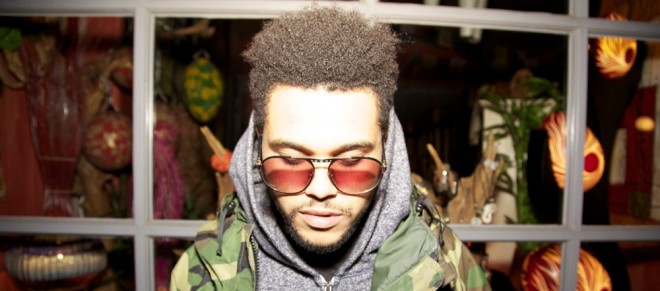
It should come as some surprise that this year’s biggest R&B star, at least in terms of Internet buzz, wasn’t a flashy major label backed showman, but a self-made, reclusive crooner from Toronto. The Weeknd, aka Abel Tesfaye, spent much of the year in hiding, ditching lucrative gigs in New York for shows in Guelph and London, Ontario. His mixtapes, House of Balloons and Thursday, which he gives awayonline, shirk the genre’s party life tropes. Instead, Tesfaye weaves dark, anxiety-fueled tales built on woozy beats that sample airy indie acts Cocteau Twins and Beach House.
For all the twists and turns music took this year, 2011was the year dance took over. The past twelve months have seen a collective shaking off of the swinging R&B beats that ruled pop for the past decade in favour of the driving, teutonic rhythms of 90s Eurodisco. But while R&B lost its long-held stranglehold on the mainstream, it emerged as the source of the year’s most interesting and progressive music.
For years indie kids looked down on modern R&B as a purely commercial pursuit, its stars more concerned with product placement than art. The R&B scene in turn viewed indie rock as the realm of stiff, privileged white kids. But artists who’ve come of age in a world where the Internet and iPods have eroded genre lines see no contradiction in taking cues from soul singers and R&B producers while keeping their feet firmly planted in the ethos of indie rock. Their musical lineage puts Kurt Cobain and Aaliyah on the same pedestal.
Tesfaye is just one of a growing number of R&B stars raiding the indie world for samples. Frank Ocean, lone crooner in L.A. crew Odd Future’s wild-child posse, explored similar territory on his Nostalgia, Ultra mixtape. Not to be outdone, indie kids similarly looked to R&B to inject a bit of swing into its stiff rhythms.
The shift has been a long time coming. Ever since P. Diddy married Notorious B.I.G.’s aspirational rhymes to booty-shaking beats and samples, R&B has been on an upwardly mobile track. But with commercial success comes saturation; hip-hop and pop battled back, cribbing R&B’s club-life tropes, wearing down the public’s patience for such things.
Dance music’s ascendance to the top of the charts didn’t herald a brave new era for pop, though. In an article for the New York Times, Retromania author Simon Reynolds argued that the re-emergence of Europe’s discotheques as tastemakers is less a matter of inspiration than wholesale theft. He didn’t have to look very far for proof: Lady Gaga has always steeped her music in the continent’s thumping house, but let it take centre stage on this year’s Born This Way and its Madonna-cribbing title track. The Black Eyed Peas, the one-time also-rans of the conscious hip-hop movement, now sound more machine than man, while a wave of R&B stars, from Akon to Usher, lined up to voice French house producer David Guetta’s club anthems. Guetta repaid the favour by casting their brand of R&B from the airwaves.
The catch-all world of indie rock has long shied away from the overt sexuality and funkiness of R&B. Yet this year saw an increasing number of artists weaned punk’s ideals and the the Velvet Underground’s art-damaged rock lean on slinky grooves, soulful vocals and studio wizardry. The turning point seemed to come with release of R. Kelly’s 12-part R&B soap opera “Trapped in the Closet,” a series that took the genre’s lyrical tropes to such ludicrous extremes that even kids who’d never paid the genre any mind took notice. They’ve been working their way back ever since.
Artists like Montreal’s Grimes and How to Dress Well sing with the unrequited longing of the genre’s greatest crooners over glacial beats that recall chopped-and-screwed hip-hop and R&B. (The style, pioneered by Southern hip-hop producer DJ Screw, finds producers and DJs slowing tracks down, then digitally skipping beats or scratching over top.) Salem, the divisive pioneers of last year’s buzz-genre witch house, used the technique to create apocalyptic soundscapes. Vancouver’s Babe Rainbow made a name for himself chopping and screwing everything from Beyoncé to K-pop, while Montreal’s CFCF created a subgenre-of-a-subgenre with his Nightbus mixes.
These artists may never find mainstream acceptance, but they’re leaving a musical mark. Rap superstar Drake’s sing-song rhymes bear a striking resemblance to many of these underground works and his association with the Weeknd shows modern R&B is already bleeding into other genres. With modern R&B continuing to search for a new identity, you can bet that it won’t be long before the genre’s back on top and the skinny white kids that pack dingy art spaces and abandoned warehouses are thumping 808s and house beats.